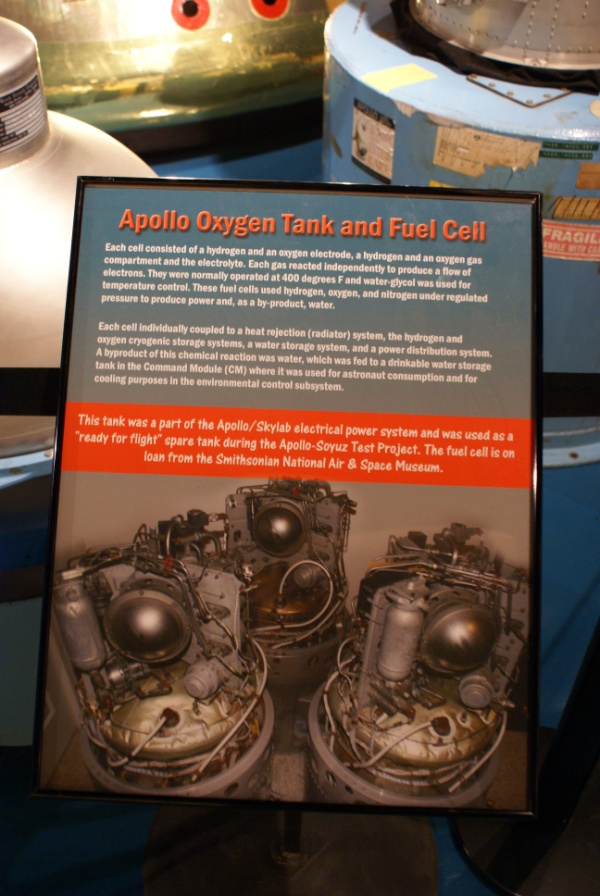| Prev |
heroicrelics.org Stafford Air & Space Museum Site Index Apollo Fuel Cell Gallery |
Next |
dsc46592.jpg
The sign accompanying the fuel cell. It reads
Each cell consisted of a hydrogen and an oxygen electrode, a hydrogen and an oxygen gas compartment, and the electrolyte. Each gas reacted independently to produce a flow of electrons. They were normally operated at 400 degrees F and water-glycol was used for temperature control. These fuel cells used hydrogen, oxygen, and nitrogen under regulated pressure to produce power and, as a by-product, water. Apollo Oxygen Tank and Fuel Cell
Each cell individually coupled to a heat rejection (radiator) system, the hydrogen and oxygen cryogenic storage systems, a water storage system, and a power distribution system. A byproduct of this chemical reaction was water, which was fed to a drinkable water storage tank in the Command Module (CM) where it was used for astronaut consumption and for cooling purposes in the environmental control subsystem.
This tank [referring to the liquid oxygen tank also on display] was part of the Apollo/Skylab electrical power system and was used as a "ready for flight" spare tank during the Apollo-Soyuz Test Project. The fuel cell is on loan from the Smithsonian National Air & Space Museum.

| Time picture taken | Thu Jul 31 10:56:22 2008 |
| Location picture taken |
Apollo Gallery Stafford Air & Space Museum Weatherford, Oklahoma |
| Picture also in | Apollo Service Module Cryogenic Oxygen Tank |
| Prev |
heroicrelics.org Stafford Air & Space Museum Site Index Apollo Fuel Cell Gallery |
Next |